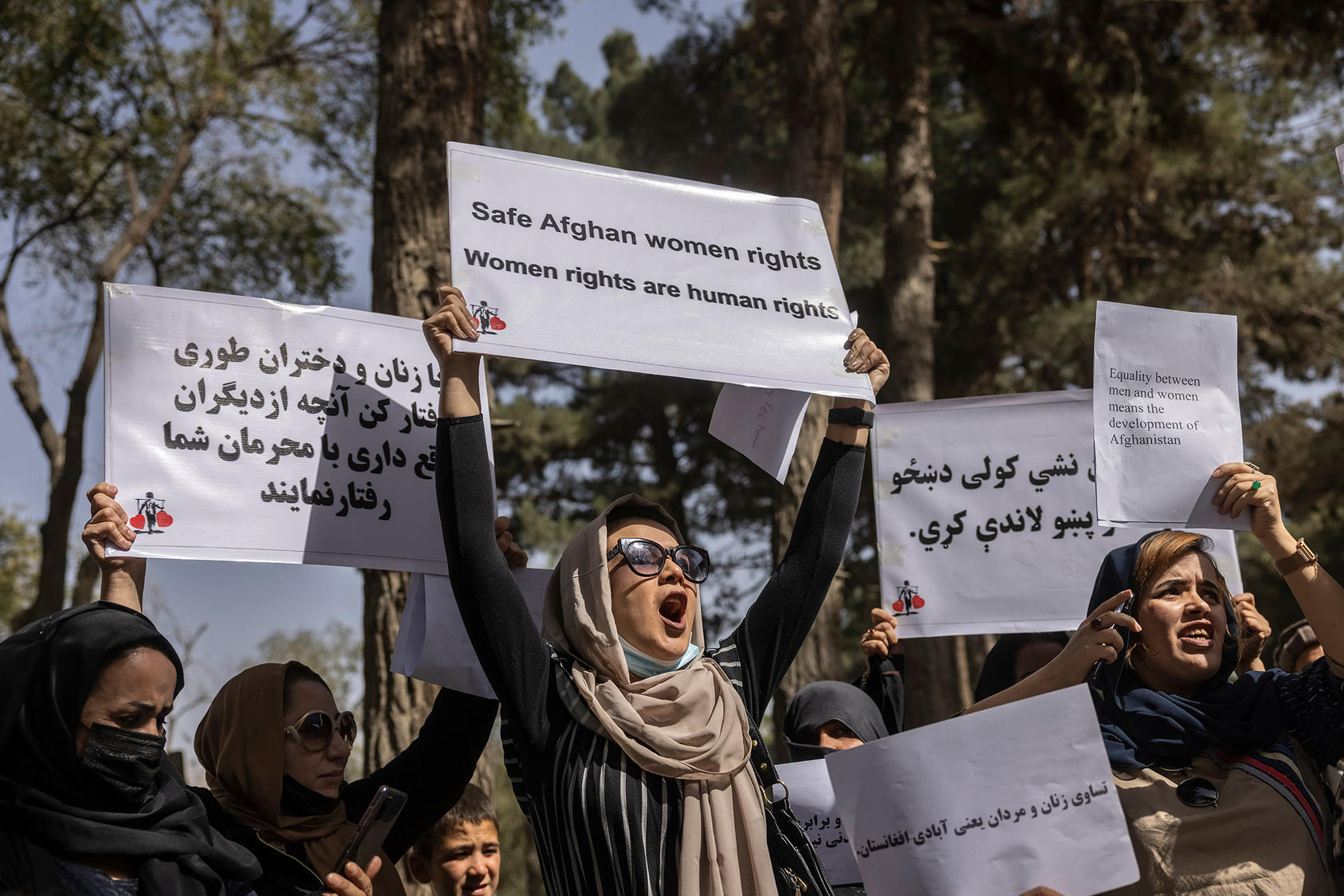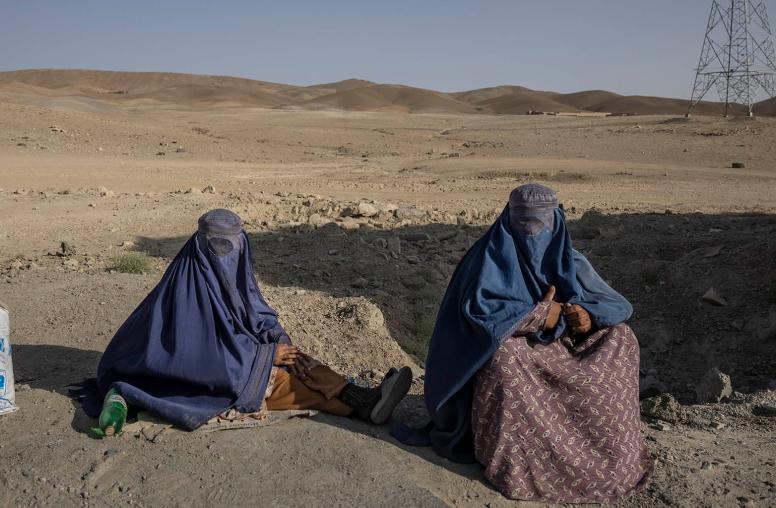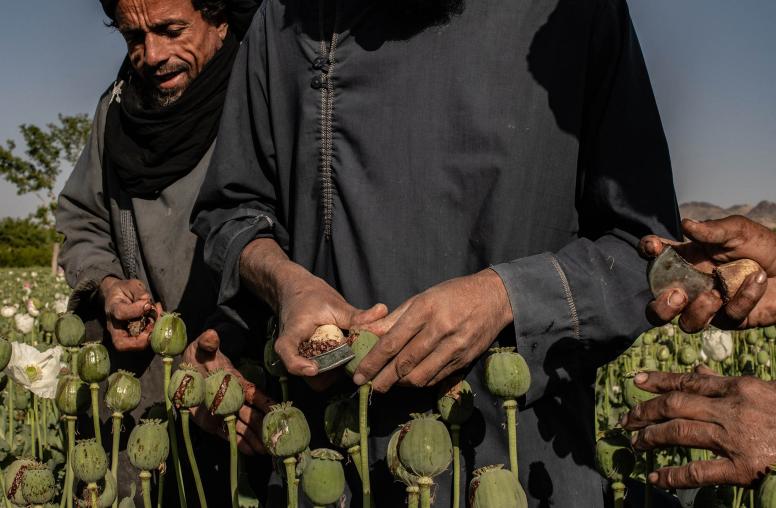When pressed on the future of girls’ education in Afghanistan, Taliban Deputy Foreign Minister Mohammad Abbas Stanikzai stated that their government law requires education for “both men and women” and signaled the former insurgent group would reopen girls’ schools once the Taliban government developed “some sort of solution.”

That was over 25 years ago, at the outset of the Taliban’s first stint governing Afghanistan from 1996-2001. Stanikzai and several other Taliban officials continually assured that a policy shift was imminent — but the Taliban never lifted the ban on women’s and girls’ education.
More than two decades later, with the Taliban in power once again, Stanikzai has reassumed his position as deputy minister of foreign affairs. With that familiar title has come familiar rhetoric regarding the need to reopen girls’ education.
But this time, the Afghan people understand the truth. They know the intervening years have failed to soften the Taliban’s stances — that the words of an official like Stanikzai don’t represent a new consensus within the Taliban. Afghans know that underneath the Taliban’s hollow promises, the group as a whole still exhibits the same obstinance toward popular reform that characterized their rule in the late 1990’s. To create a better future, Afghans cannot wait for the Taliban to see the light. We need to build it ourselves.
A Return to the Past
Prior to August 2021, Afghan youth — especially Afghan girls — had taken immense steps to create a better future for themselves and their country, expanding their rights, access to education, economic prospects, and bolstering a fledging democratic process.
The progress was hard-won, and countless challenges still stood in our path. But the rise of the Taliban government only served to exacerbate any problems Afghan youth and girls faced a year ago. Since the fall of Kabul, Afghanistan’s catastrophic economic crisis has left a vast majority of youth unemployed. And after promising both Afghans and the West that schools for girls would reopen, almost all of them remain closed.
Afghan girls can play an important role in the growth and development of society. Learning and education are some of the most basic and essential rights, and nothing should deprive Afghan girls of this. By closing the gates of girls’ schools to Afghans and the international community, the Taliban have once again proven that they are petrified and backward-thinking. The group, which has been at war for nearly three decades, continues to kill innocent people, threaten and assault educational facilities, and remains a major threat to Afghans and global peace.
Meanwhile, hundreds of thousands of Afghans, myself included, have been forced to flee the country out of fear for our safety. Being torn from our communities and loved ones is hard enough. But the suddenness with which our lives changed is something that many in the Afghan diaspora are still struggling to process.
My wife and I were given only two days’ notice — and two backpacks for our belongings — before being swept into a life of near-constant transit. Since leaving Afghanistan, we’ve stayed in Qatar, Sicily and eventually New Mexico before finally settling in North Carolina. Almost a year later, the reality of what transpired is just now beginning to sink in.
However, the peacebuilding lessons I learned from my work in Afghanistan are still with me. From starting my social activism in high school, to becoming a medical doctor, to my time spent teaching and promoting youth education in all subjects, I’ve seen time and again that when Afghans embrace one another and commit ourselves to creating change, we will always find practical solutions for the betterment of Afghan society.
The Youth-Led Path Forward
Young people are one of the biggest and best assets a country has when it comes to building a bright and prosperous future. And in Afghanistan, more than 60 percent of the population is under the age of 25.
This figure reflects a massive constituency ready to be mobilized on behalf of peace and human rights. The Taliban may attempt to stifle youth in Afghanistan by closing schools, threatening violence and restricting freedom of speech — but they can’t stop young leaders from trying.
Young people have been at the center of Afghanistan’s progress over the past two decades. And while there is still a long way to go — even longer now that the Taliban have returned to power — young Afghans’ hard work and immense patience are certainly up to the challenge.
Based on my experience, I would like to suggest the following recommendations that those inside and outside the country can adopt to increase the literacy of women and improve the education of youth in general:
1. Voluntary efforts to spread knowledge in our communities
This could be done by organizing independent educational classes in homes and neighborhoods that are relatively safe from Taliban reprisals. For us Afghans abroad, we can assist by raising funds and supplies to support Afghan students. From our new home here in the United States, my wife and I founded The Two Doctors Mission in part to support similar education resources.
Even starting from the smallest of steps — like collecting necessary study materials such as textbooks, notebooks, pens and pencils — can give parents a reliable network that facilitates the education of their daughters and sons in a homeschool environment.
2. Amplifying our voices against oppression and injustice
Facebook, Twitter, Instagram, YouTube and other social media platforms are some of the best ways to raise your voice and support other youth and their activities. Orchestrating campaigns and publishing them through social media will play a big role in making them stronger and more successful. The relative versatility of social media campaigns allows leaders to assess the situation and seize opportunities as they come along. And the digital environment offers a place where all Afghans — whether in the country or abroad as part of the diaspora — can still make their voices heard as a united people.
3. Partnering with national and international institutions that work for peace, education and human rights.
As youth peacebuilders, we can leverage our contacts and connections to support our activities by, for example, introducing ourselves, our organizations and our plans to NGOs. Tapping into international networks, such as my time as part of USIP’s Generation Change Fellows Program and my current role on the Institute’s Youth Advisory Council, can offer a trove of expertise and inspiration from other young peacebuilders around the world.
Forging these connections with other institutions working for peace, positive change and the rights of the younger generation can provide leverage over the Taliban government and force them to stop violating the rights of Afghans, especially Afghan girls, and improve the country. In a situation where the lives of those inside Afghanistan are in danger, and the lives of those outside are subject to extreme uncertainty, standing on our own will not be easy — that’s why we young Afghans are stronger when we work together.
Abdul Basit Amal is a medical doctor and was a provincial founder for the Youths Association of Afghanistan. He is also a USIP Generation Change Fellow and current member of the Institute’s Youth Advisory Council.



